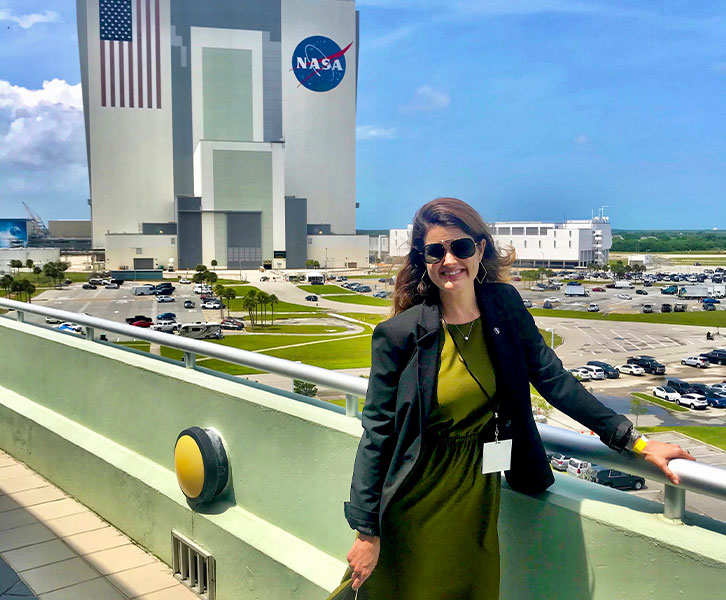“We are going.” According to Casey Swails, B.S. Management '07 and deputy associate administrator at NASA, it’s something NASA says a lot. NASA is going. And they have their sights set on sending human crews back to the Moon with the Artemis mission. The Artemis 1 Orion spacecraft launched from Florida’s Kennedy Space Center in the early hours of November 16, 2022. In this first leg of the Artemis mission, Orion will travel 40,000 miles beyond the Moon and return back to Earth in 25.5 days. There is no human crew on board, yet.
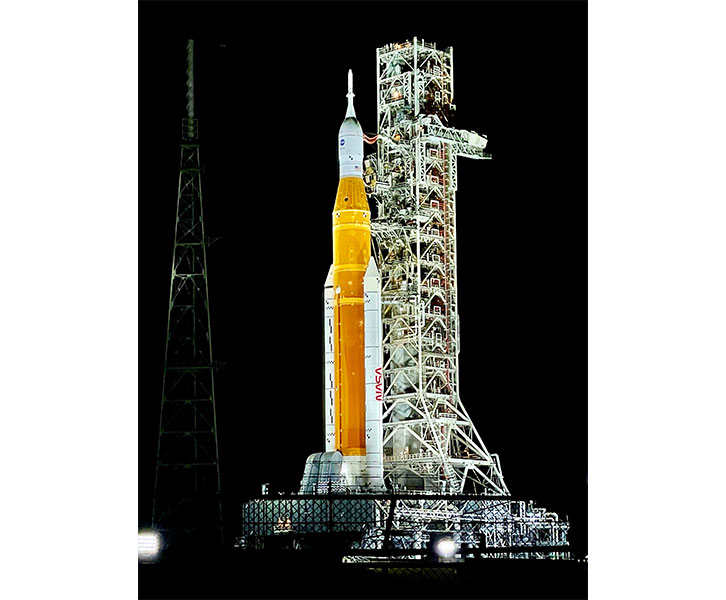 Rather, a three-mannequin crew mans the craft. Commander Moonikin Campos sits in the commander’s seat collecting data on acceleration and vibration so NASA can best prepare for what future human crews might experience. Meanwhile, two “phantoms” named Helga and Zohar—constructed of materials that mimic the soft tissue, organs and bones of a woman—will measure radiation exposure during the mission.
Rather, a three-mannequin crew mans the craft. Commander Moonikin Campos sits in the commander’s seat collecting data on acceleration and vibration so NASA can best prepare for what future human crews might experience. Meanwhile, two “phantoms” named Helga and Zohar—constructed of materials that mimic the soft tissue, organs and bones of a woman—will measure radiation exposure during the mission.
Making the Magic Happen
Swails was in Florida for Artemis’s night launch. She saw the sky light up and felt the thrill of being part of a mission propelled by dreamers and explorers, brilliant ones, with the capacity to build rockets that will return humans to the Moon for the first time in 50 years.
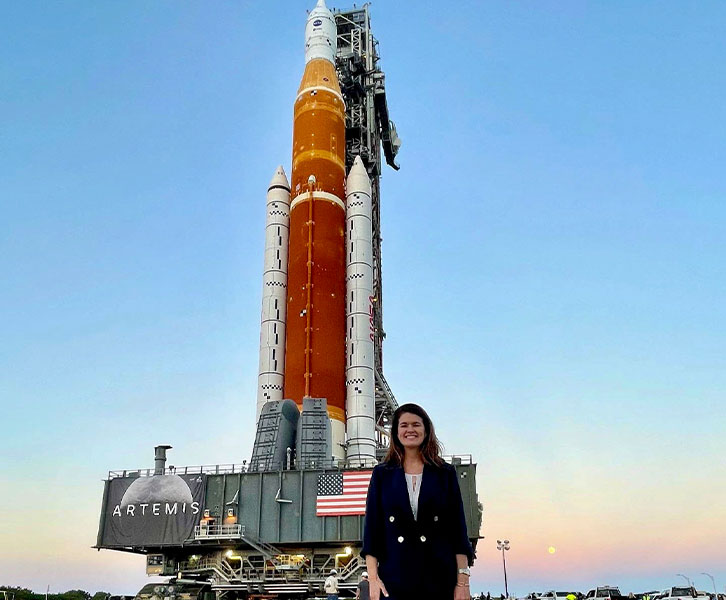 Swails is a dreamer herself, and her passion for connection and exploration power the exciting work she does at NASA. “I wasn’t around when we landed on the Moon,” Swails said. “Most people were not. We are definitely closer to that, and hopefully, Artemis will be the vehicle that takes us back to the Moon and this time, land the first woman on the Moon. That is the commitment from the agency —when we first land crew back on the Moon, it will be a female.”
Swails is a dreamer herself, and her passion for connection and exploration power the exciting work she does at NASA. “I wasn’t around when we landed on the Moon,” Swails said. “Most people were not. We are definitely closer to that, and hopefully, Artemis will be the vehicle that takes us back to the Moon and this time, land the first woman on the Moon. That is the commitment from the agency —when we first land crew back on the Moon, it will be a female.”
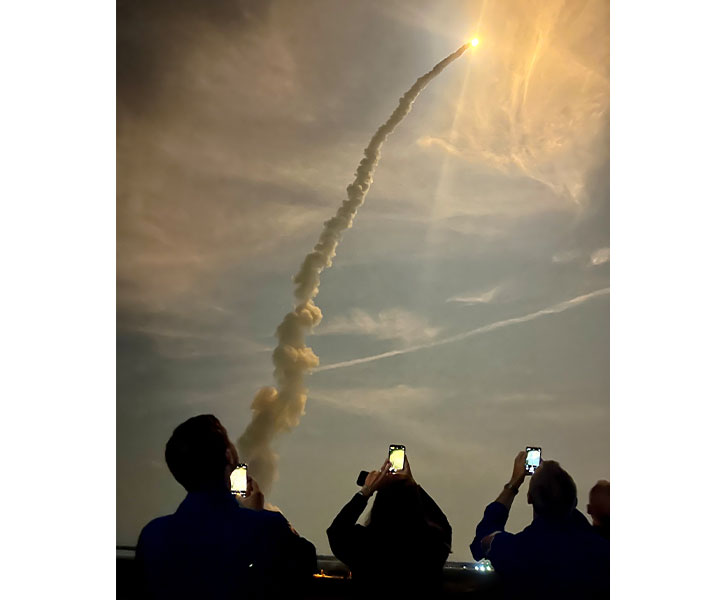 The Artemis 1 night launch must have reminded Swails of her first night launch years ago in Kazakhstan. Swails was there supporting the International Space Station (ISS) for the Soyuz launch. After the launch, the crowd of people headed back to the hotel. It was around three in the morning when William “Bill” Gerstenmaier, a legend and head of human space flight, asked Swails to come outside and look at the night sky with him. She sat down, stared up at the clear, black sky dotted in stars, and waited.
The Artemis 1 night launch must have reminded Swails of her first night launch years ago in Kazakhstan. Swails was there supporting the International Space Station (ISS) for the Soyuz launch. After the launch, the crowd of people headed back to the hotel. It was around three in the morning when William “Bill” Gerstenmaier, a legend and head of human space flight, asked Swails to come outside and look at the night sky with him. She sat down, stared up at the clear, black sky dotted in stars, and waited.
“It was totally quiet outside in the middle of Kazakhstan, and we’re looking up at the night sky seeing the Soyuz headed for the international space station,” Swails recalled. “We could see the spacecraft we just saw launch with the crew on board. It was unreal and such a special memory for me sitting there watching this with Bill. It was such a magical moment.”
It’s magical moments like this that make Swails grateful for the Georgia Tech co-op that led her to Scheller, and ultimately, NASA. “When I took my first co-op job, I was an industrial engineering major,” Swails said. “I took this job, and I found myself sitting on the shop floor with a power drill in hand thinking, ‘This is just not what I want to do with my life.’” A series of events followed, including talking to counselors and taking an assessment test, that pointed her to the business school, then the College of Management.
Taking Unexpected Opportunities
Ken Little, head of Georgia Tech’s co-op programs, knew Swails was switching majors and looking for another internship that would cement her switch to business. “He called me one day,” Swails recounted. “And he said, ‘Hey, NASA is looking for business majors. I recommended you as part of their interview list if you’re interested.’”
Swails was interested, but she went into her interview skeptical about moving to Houston and thinking about her commitment to her volunteer work on campus at Alpha Delta Pi and her desire to study abroad. She wondered how she was going to make it all fit and concluded that she wouldn’t have to worry about that, because she wasn’t moving to Houston anyway. She would take her first offer from a local power company and stay close to campus and her well-laid plans.
The unexpected happened during her NASA interview. Her interview with the head of NASA’s co-op program was a bit unconventional in that it felt to Swails more like a conversation. “An amazing conversation, the best conversation.” He looked over her resume and asked about swimming on her high school swim team and her work as a life guard. She steered the conversation towards the work she’d recently completed at the engineering company.
As they wrapped up their allotted time together, Swails said, “He looked at me and asked if I had any competing offers. I said I might have one on the table soon. He said, ‘Okay. I don’t know what this company is that you worked for as an engineer, and I don’t know who this other company is that you’re about to get an offer from, but everybody in the world knows what NASA is.’”
Swails agreed that that was a good point. When she walked out of the Student Success Center, her mind and heart had completely changed. She called her mom and told her if she got the offer from NASA she would be moving to Houston. Swails was determined now. She had to go.
Connecting to a Mission and its People
Three co-ops and 15 years at NASA later, Swails is grateful for that push to go even when the timing didn’t make sense. A lot of engineers that end up at NASA have wanted to work there since they were small. “I was not one of those,” Swails admitted. “I never grew up thinking I would go to work for NASA. Nor did I have this strong aspiration.” However, the community at NASA drew her in, and she became captivated by the team, the environment, and the mission. She set her study abroad dreams aside, pushed away lingering thoughts about consulting, and went all in.
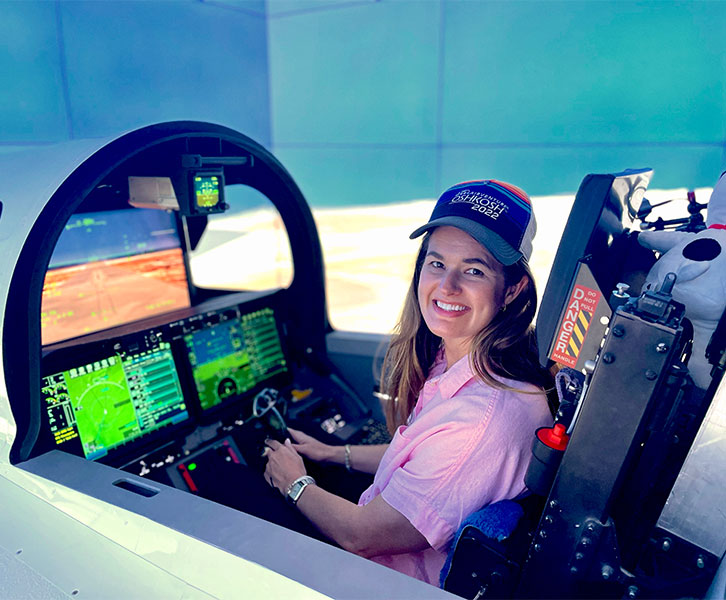 “Having that community there, and what the agency puts focus on made me quickly connect to the mission and want to be a part of that,” Swails said. “After the Columbia accident where we lost the crew, there were several years where we weren’t flying. I got to sit in the auditorium for the first return to flight space shuttle launch with the Johnson Center workforce. It was this emotional moment. I had just started working there and feeling that connection to the mission and the people there. People were cheering, crying, and hugging. It was an amazing experience. I immediately felt like I was home there.”
“Having that community there, and what the agency puts focus on made me quickly connect to the mission and want to be a part of that,” Swails said. “After the Columbia accident where we lost the crew, there were several years where we weren’t flying. I got to sit in the auditorium for the first return to flight space shuttle launch with the Johnson Center workforce. It was this emotional moment. I had just started working there and feeling that connection to the mission and the people there. People were cheering, crying, and hugging. It was an amazing experience. I immediately felt like I was home there.”
In the end it was the people and their dedication to NASA’s mission that made Swails stay. “You can go do HR, or accounting, or procurement, or IT anywhere, but the connection to the mission and the connection to the people at NASA is really something that is very special.” Wherever NASA goes, Swails will go too.
